Late August 2019, FC Barcelona travelled to the El Sadar stadium to face Osasuna. The home side led in the first half with a goal from Roberto Torres. El Barça’s manager at that time, Ernesto Valverde, brought in the 16-year-old boy called Ansu Fati for Nélson Semedo. Just six minutes later, Fati scored his first-ever La Liga goal aged just 16 years and 304 days.
The tale continued two weeks later. This time, Blaugrana hosted Valencia at the Camp Nou and the teenager was in the starting line-up alongside Antoine Griezmann. Fati only needed two minutes to score his first-ever home goal for the La Liga giants. As if it’s not enough, he made an assist to Frenkie de Jong just five minutes later, making people around the world searching for his name on Google. Without further ado, this tactical analysis will inform you about his impact at Barcelona.
Player profile
Fati is naturally a left-winger, but he can also play in the right-flank. For a fact, he played his first Champions League and La Liga games as a right-winger. However, the left-flank is his main playing field. The statistics show that Fati has scored four goals and made one assist in La Liga when playing in his favoured position. Even better, those numbers came from only 681 league minutes so far. It means that Fati has one goal contribution in every 136 minutes on the pitch. Not bad for a 17-year-old, eh?
As a left-winger, Fati is comfortable to hug the touchline but also excels when moving inside. The Bissau-born teenager is gifted with an amazing speed which allows him to outpace the defenders week in, week out. Yet, it’s not his greatest asset. It’s his great nose for goals. For a fact, Fati has scored almost all type of goals before even turning 18. He opened his La Liga account with a header, made a brace against Levante with both of his feet, and blasted past Inter’s Samir Handanović with a first-time strike from outside the box. This scout report will dig deep on Fati’s role in Barcelona’s tactics.
Comfortable in the flank
In this part of the analysis, we’re going to examine Fati’s role when Barcelona have the ball. As a left-winger, Fati is tasked to hug the touchline and provide the width in the middle third. This happens particularly when the ball is still in the Blaugrana’s playing field. The teenager’s wide positioning is important to stretch the opponents’ backline as well as allowing the inside players more time and space to roam. Behind him, the left-back (mainly Jordi Alba) is also tasked to stretch the playing field, yet slightly more inside to allow more connection with the inside teammates.
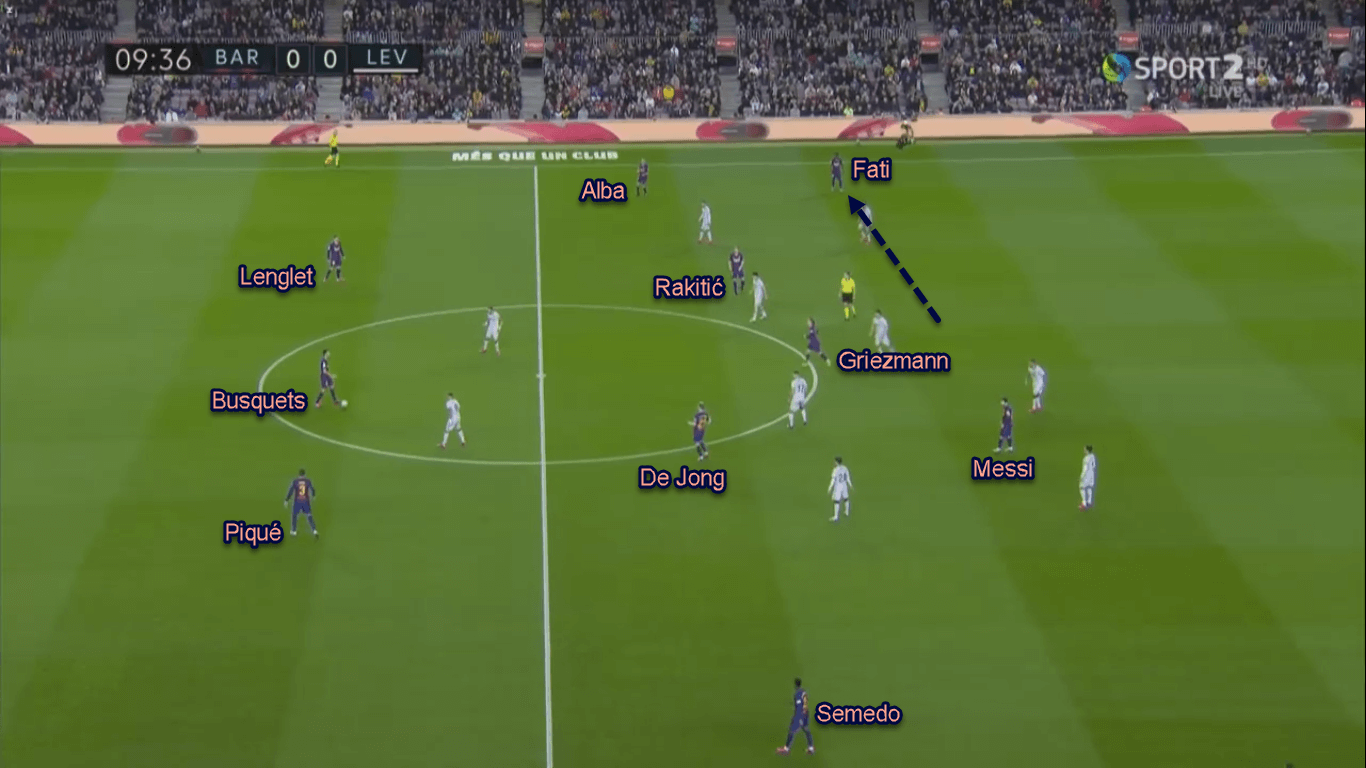
There are many variations to unleash Fati’s various skillset when he’s playing wide. The first reason is that it allows him to drive inside. When receiving the ball on the touchline, Fati will try to quickly dribble his way into the central area. After that, he can combine with his attacking comrade(s) and continue the attack.
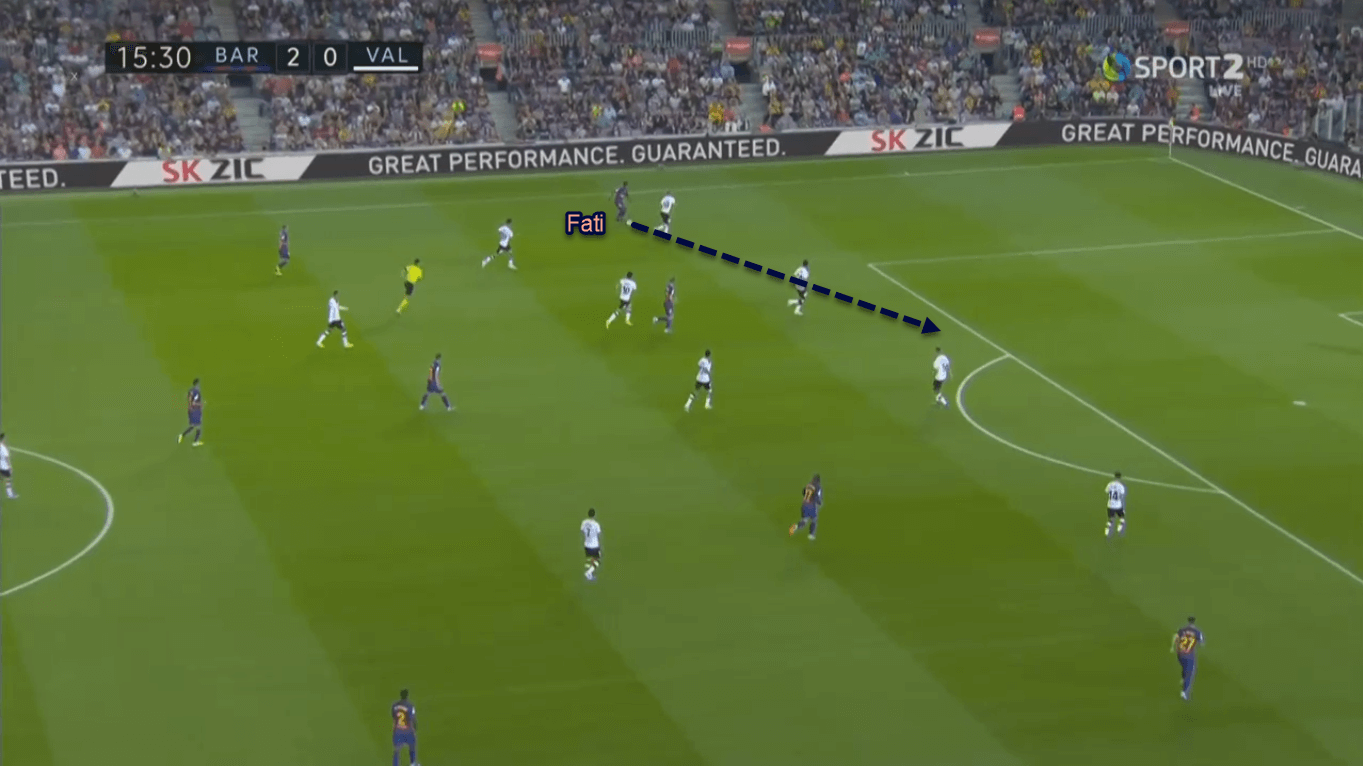
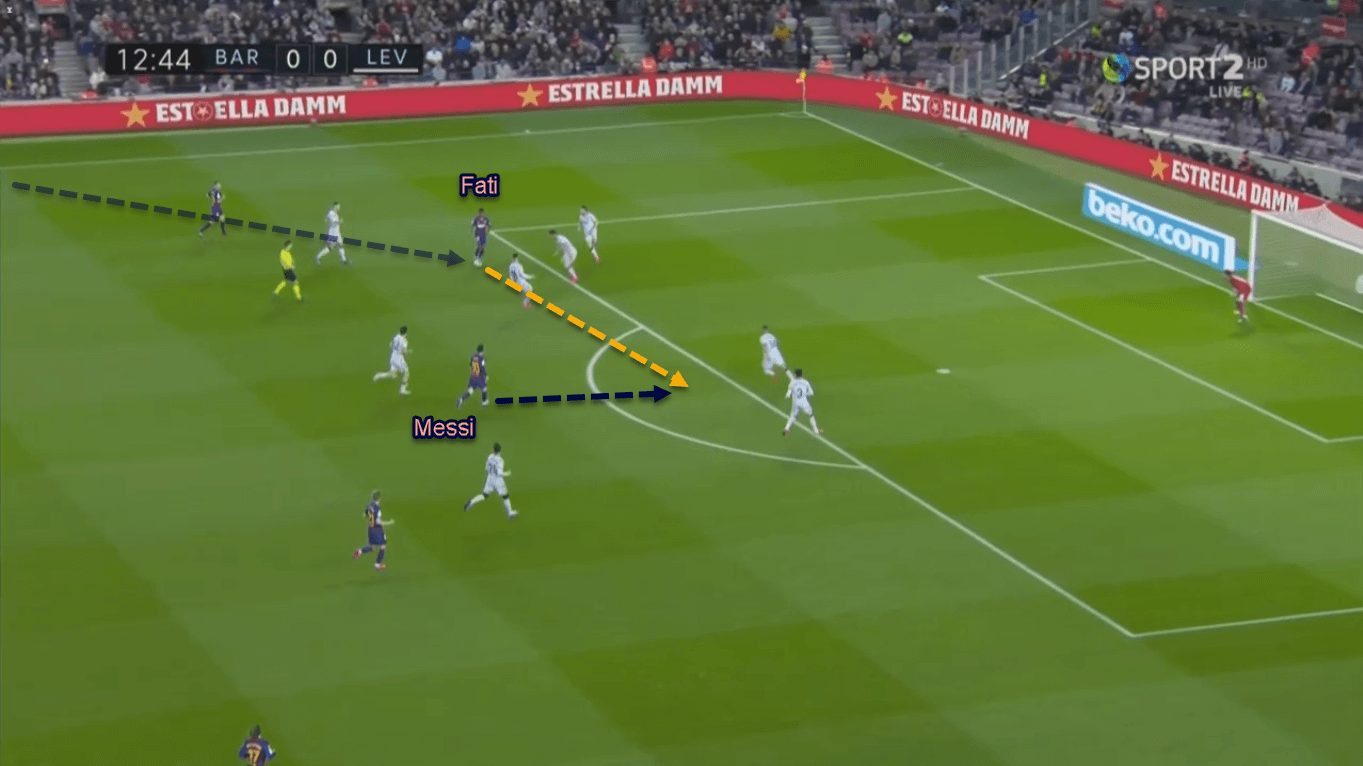
The second way is to serve Fati with through-balls in behind. When hugging the touchline, Fati puts himself out of the opponents’ right-back eyesight. It makes him hard to detect because the defender would most likely stay compact in his defensive line. If the right-back decides to close Fati down, it would open a passing space for a Barça player in a (slightly) deeper area. Then, a diagonal ball could be served to the 17-year-old, who has an amazing speed to outpace the defender.
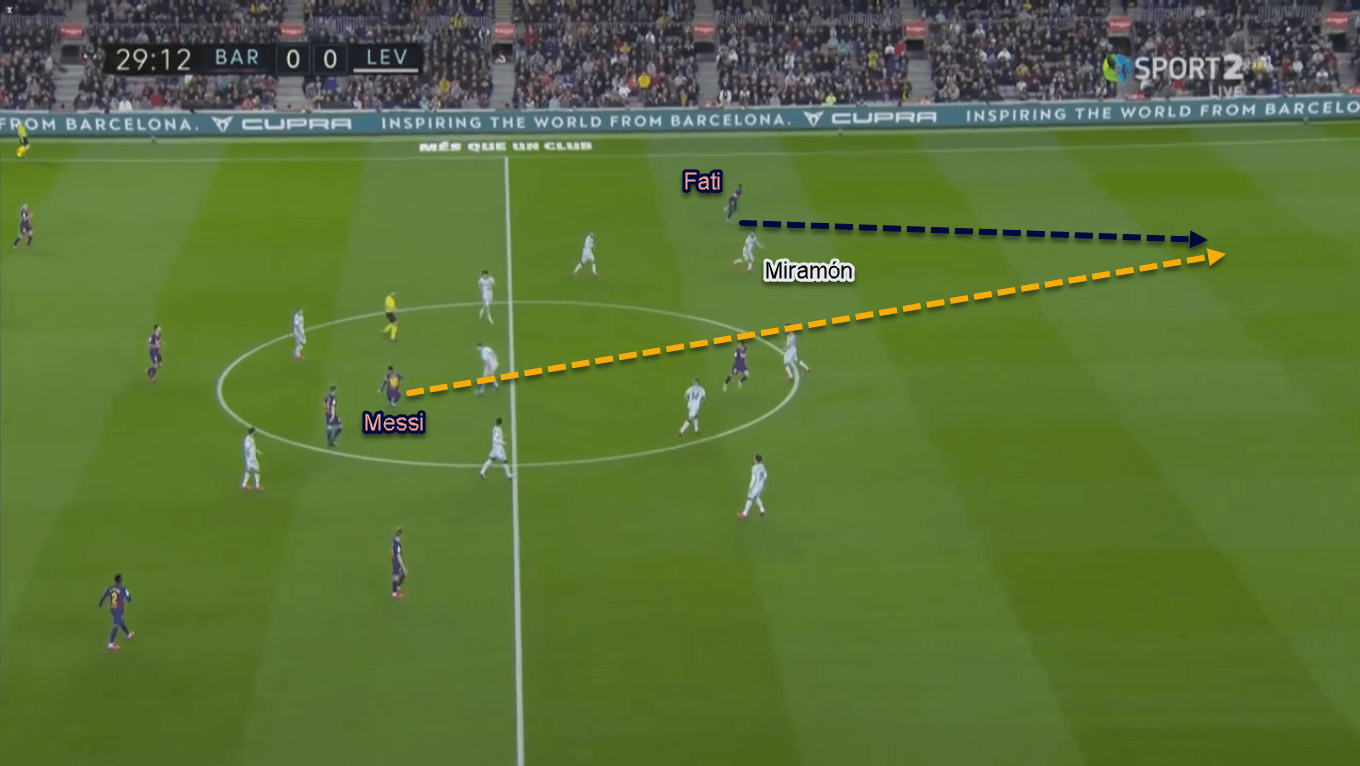
Tucks inside in the final third
Fati’s role differs when Barça are moving into the final third. Instead of staying wide, he tucks inside and plays next to the centre-forward. This movement would pull the opponents’ right-back to be closer to him and allow Alba or Júnior Firpo to bomb forward and make overlapping runs. Quite often, Blaugrana also need to switch the play to the left-hand side. Fati’s inside movement allows the left-back to receive with ample time and space before continuing the attack.
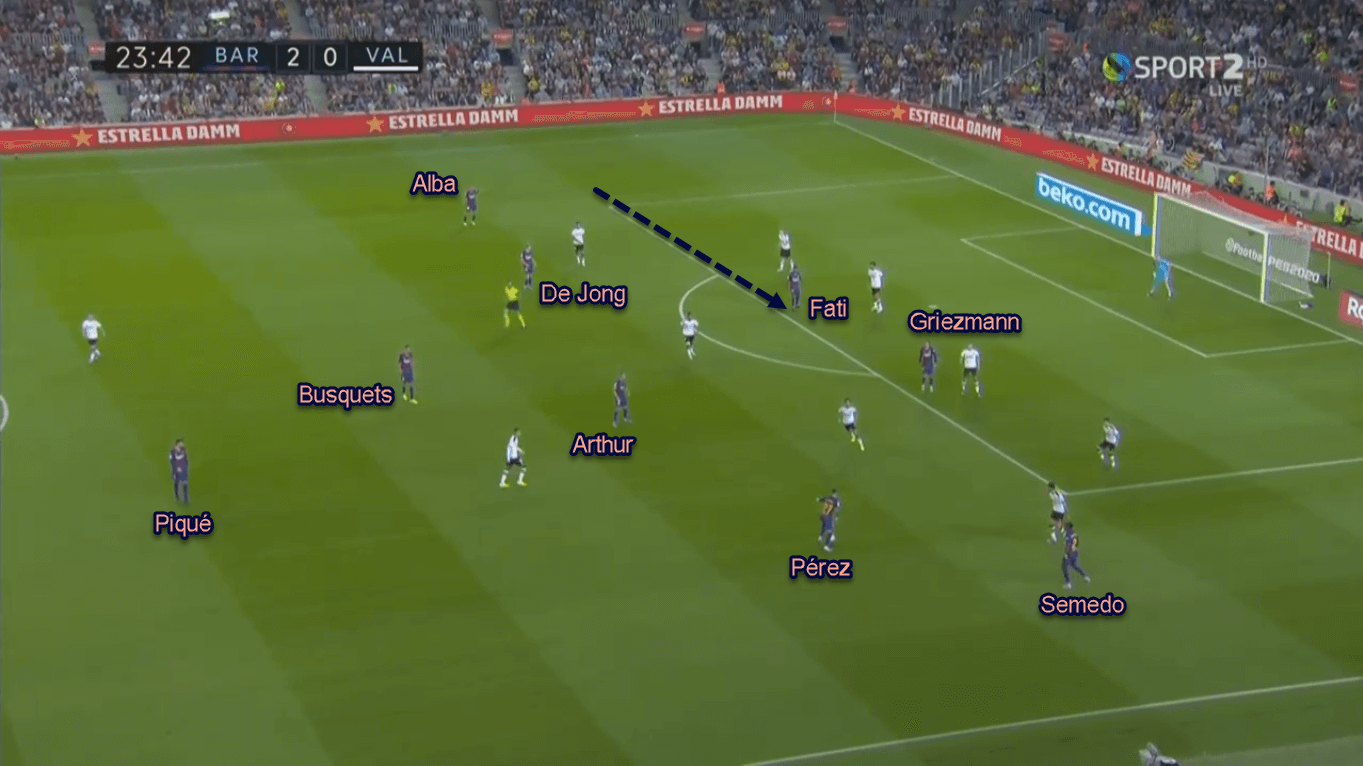
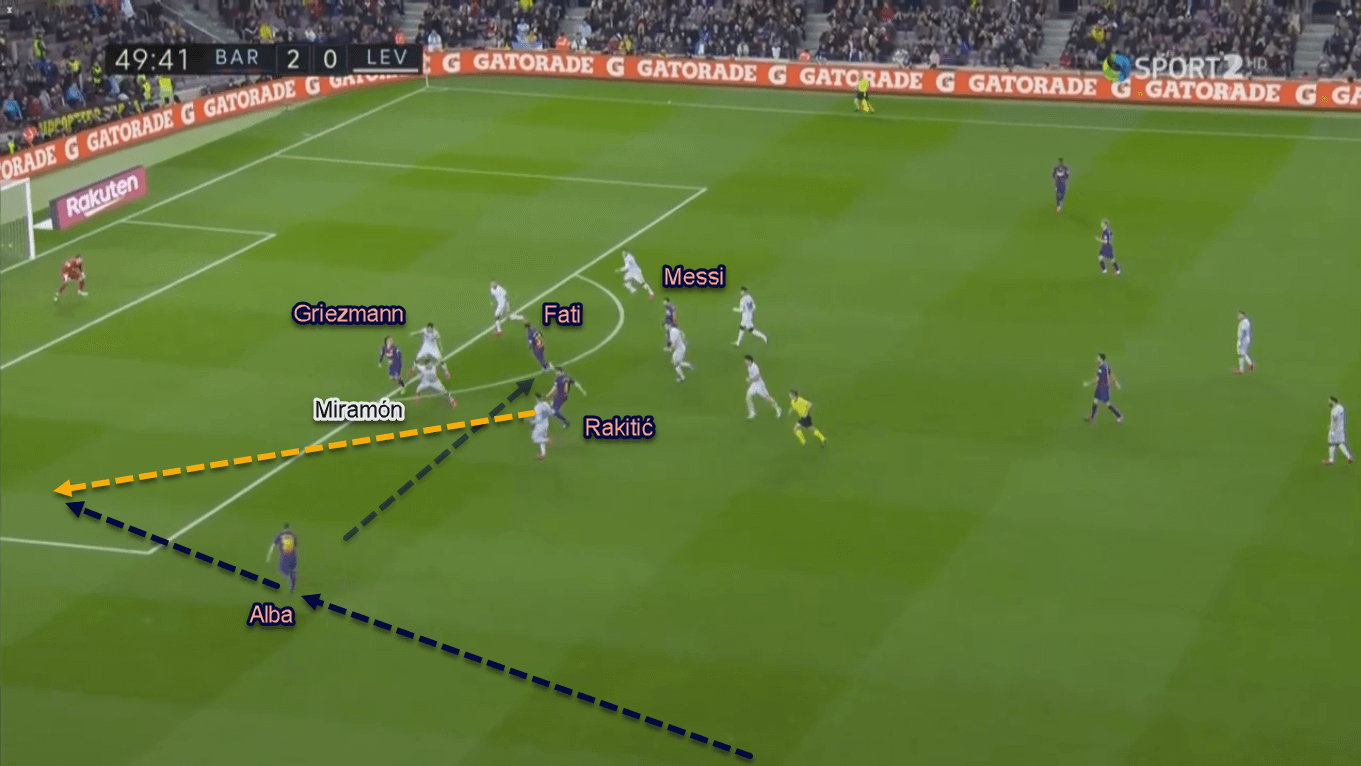
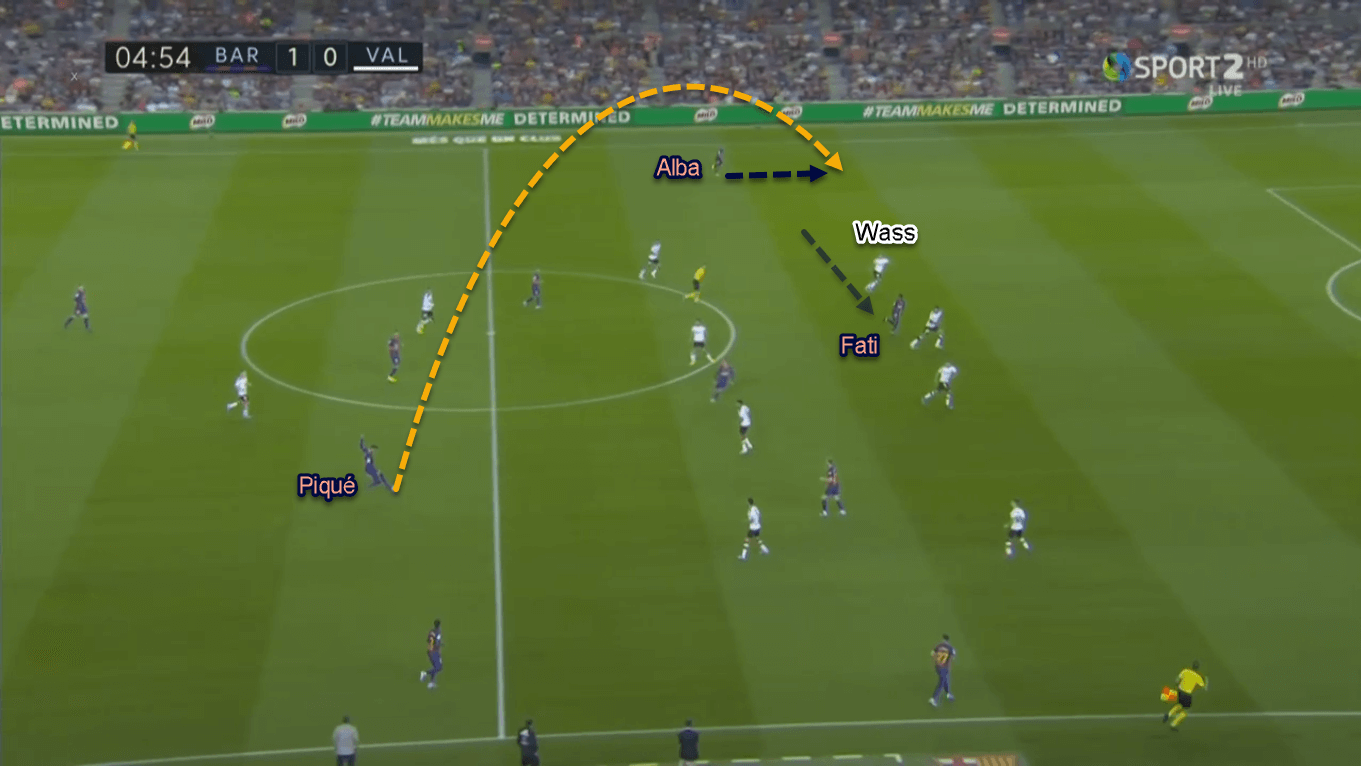
Fati’s variability is also useful when he’s playing inside. First, it allows him to combine with his attacking comrade(s) in between the lines. Barça are gifted with players like Messi, Griezmann, De Jong and many more who excels in tight spaces. In the process, Barcelona’s players would try to combine and free at least one player in the space to make a goal-scoring attempt.
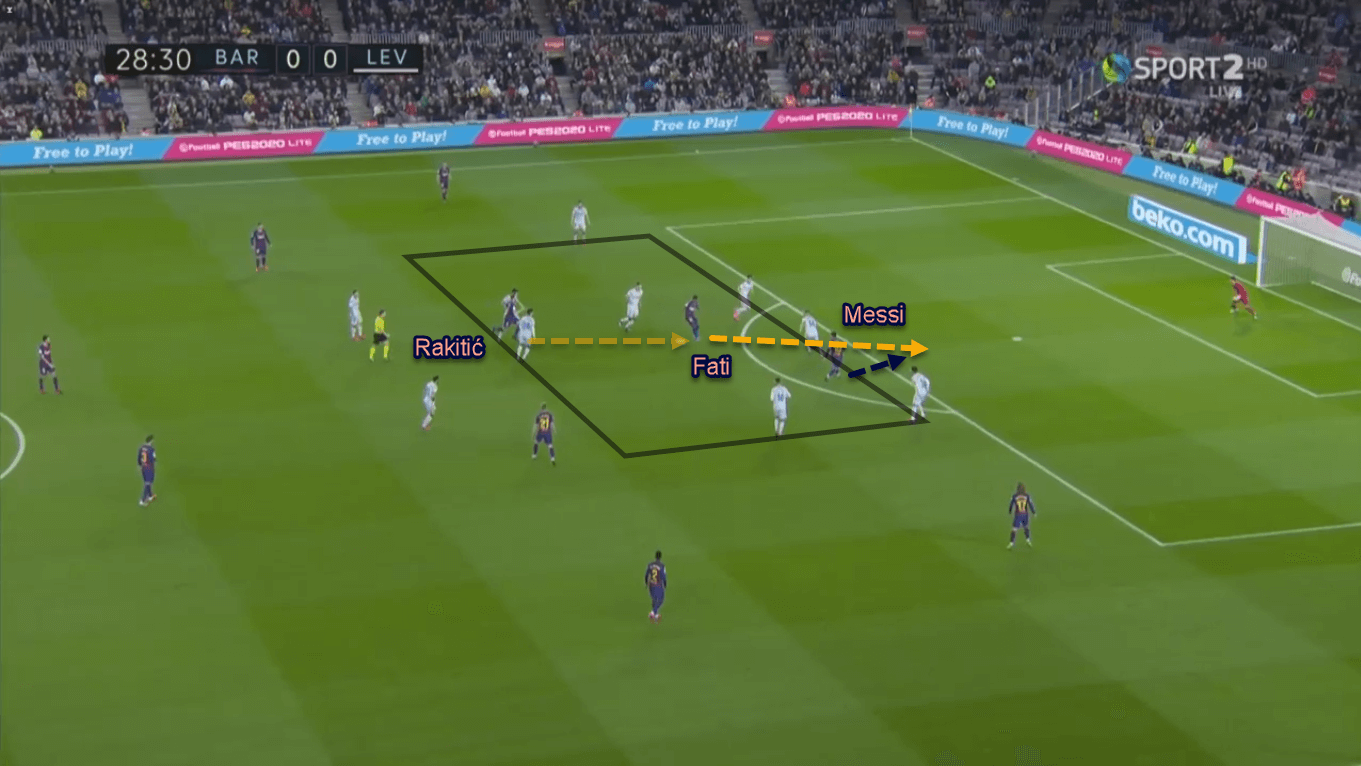
Second, moving inside allows him to make runs in behind, starting such runs in between the defenders, parallel with the defensive line. In doing so, Fati can confuse the defenders on who to close him down. It doesn’t stop there. The Spaniard’s explosiveness also enables him to outpace most of the centre-backs should he run towards the central area.
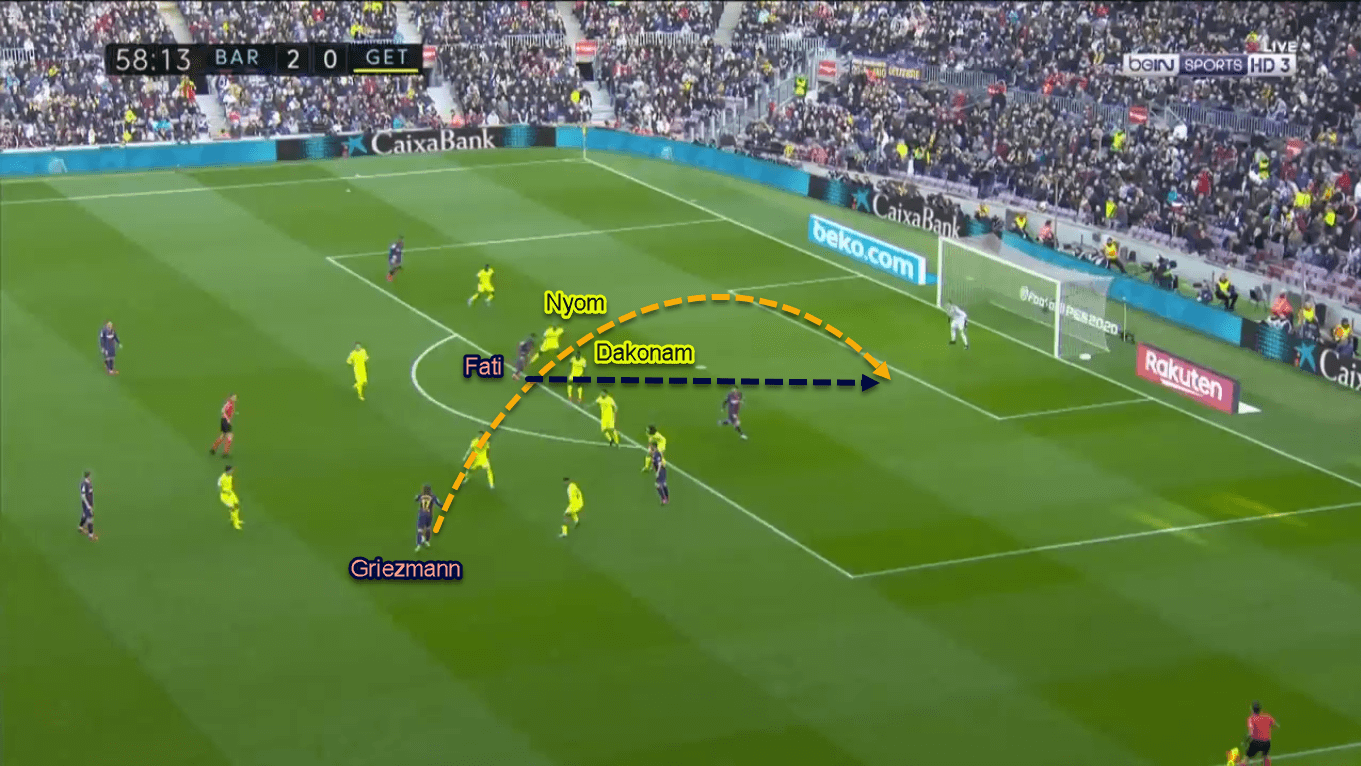
Inside threat
Fati is dangerous when playing centrally. Barcelona tend to put all of their attackers inside in the final third, especially when they attack from the flank. The objective behind this is to put as many bodies as possible in the box to attack the cross. It can also confuse the defenders on what to do because Barça’s forwards tend to vary their movements in the danger zone.
None of Barça’s forwards would make runs to the goalmouth at the same time. From three attackers, at least one would make such a run and the other(s) would offer as a cut-back receiver. Fati seems to adapt to this scheme quite well. At one moment, he could be found making a run in behind when his attacking comrade(s) pins the backline. The next moment, either Griezmann, Messi and/or Luis Suárez could make a goalmouth run yet Fati moves to the edge of the box.
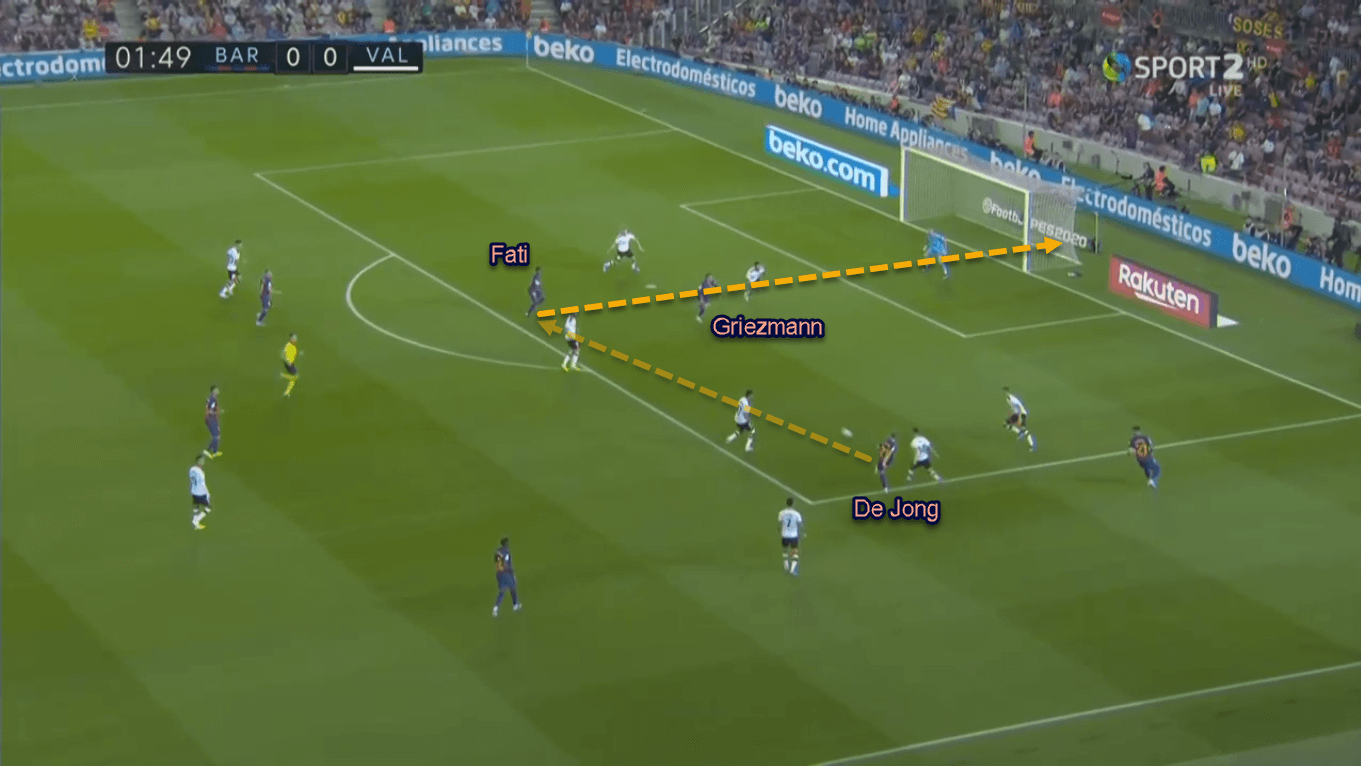
Fati is a right-footed player. However, as mentioned previously in this scout report, the academy graduate has used almost all parts of his body to make a shot. He’s made a brace between Aitor Fernández’s legs, scoring with both feet, earlier this season. Fati also outmuscled the relatively-bigger Nacho Vidal to get his first league goal.
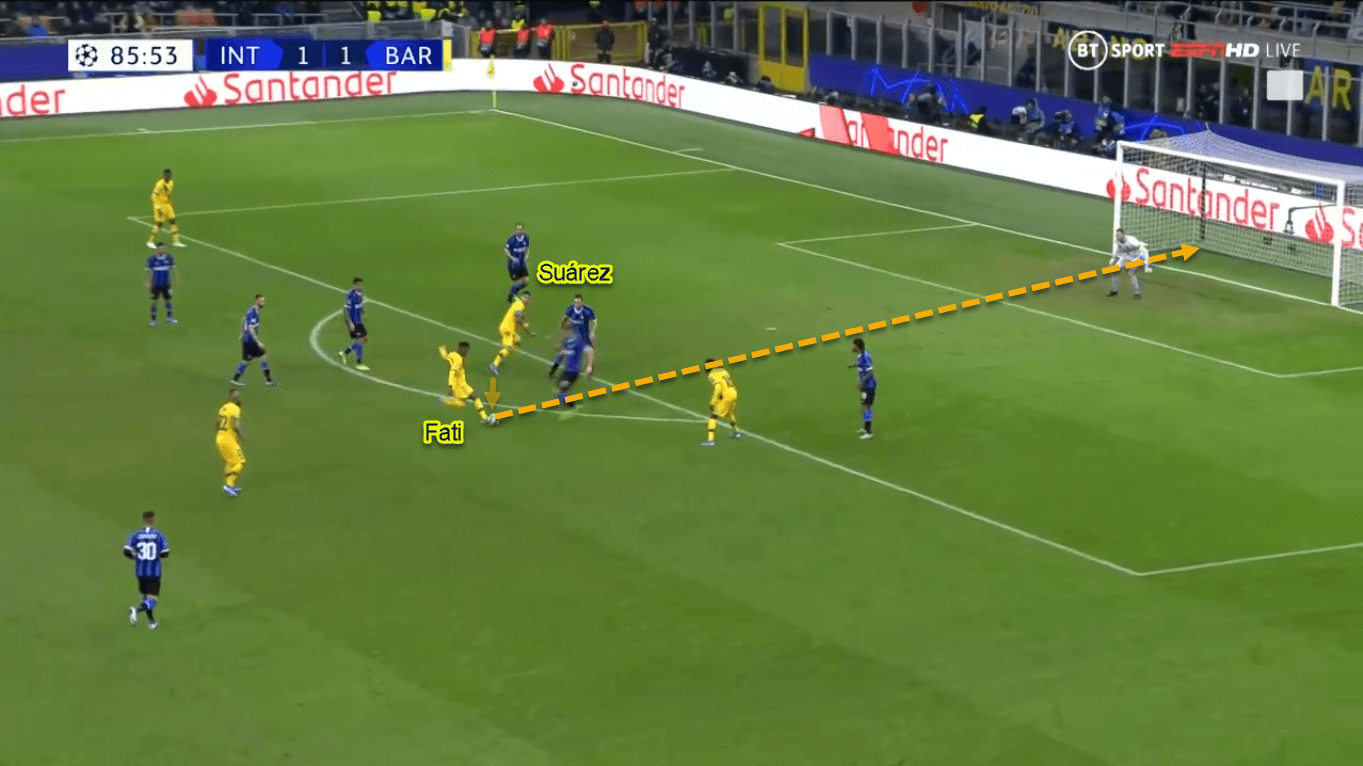
Another thing Fati likes to do is cut inside and shoot from inside the half-space. He would start this when he’s positioned a bit wide in the final third before driving inside to take a shot. Even though he hasn’t scored any from this situation, it underlines how various his weapons are.
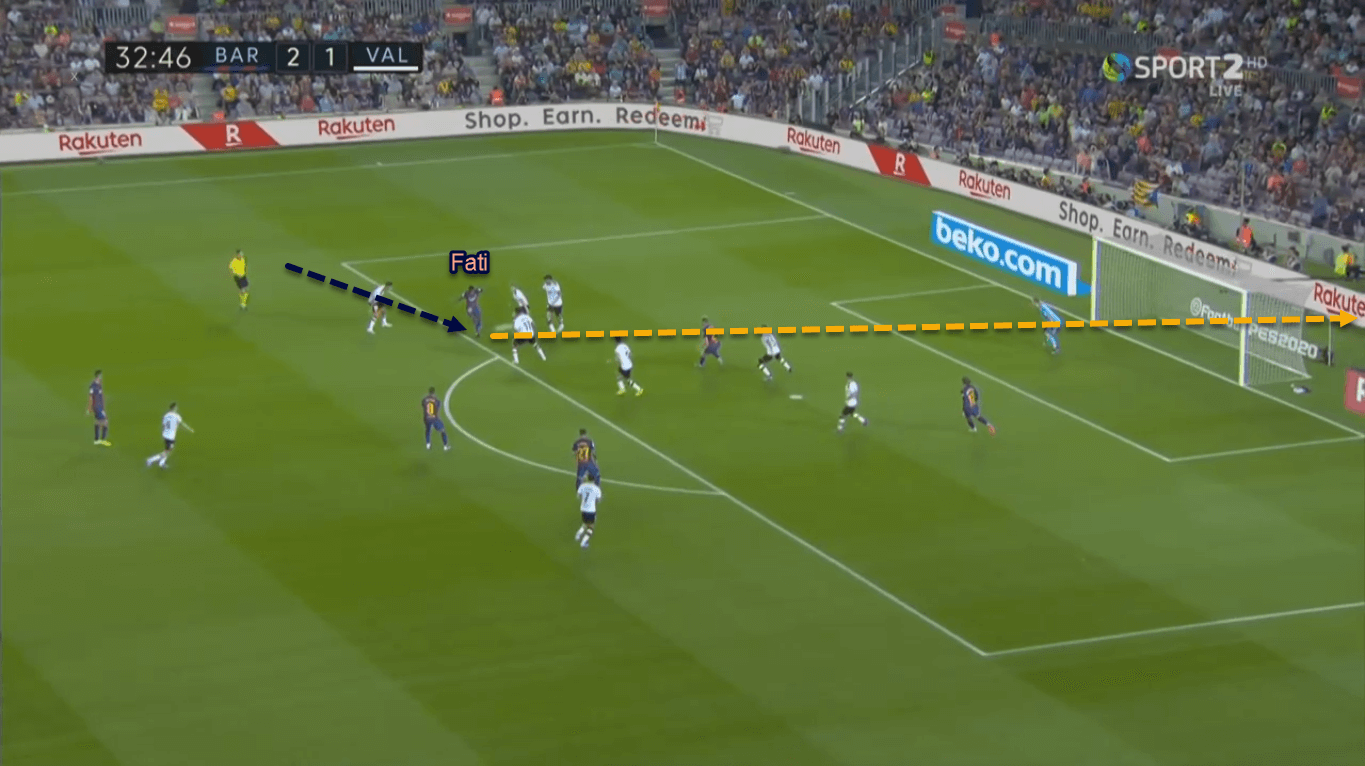
Defensive roles
Fati has played under two different managers: Valverde and Quique Setién. Both managers have different systems, particularly in terms of defensive shape. Valverde liked to set his team in a mid-block 4–1–4–1 out of possession with one defensive midfielder in between the lines.
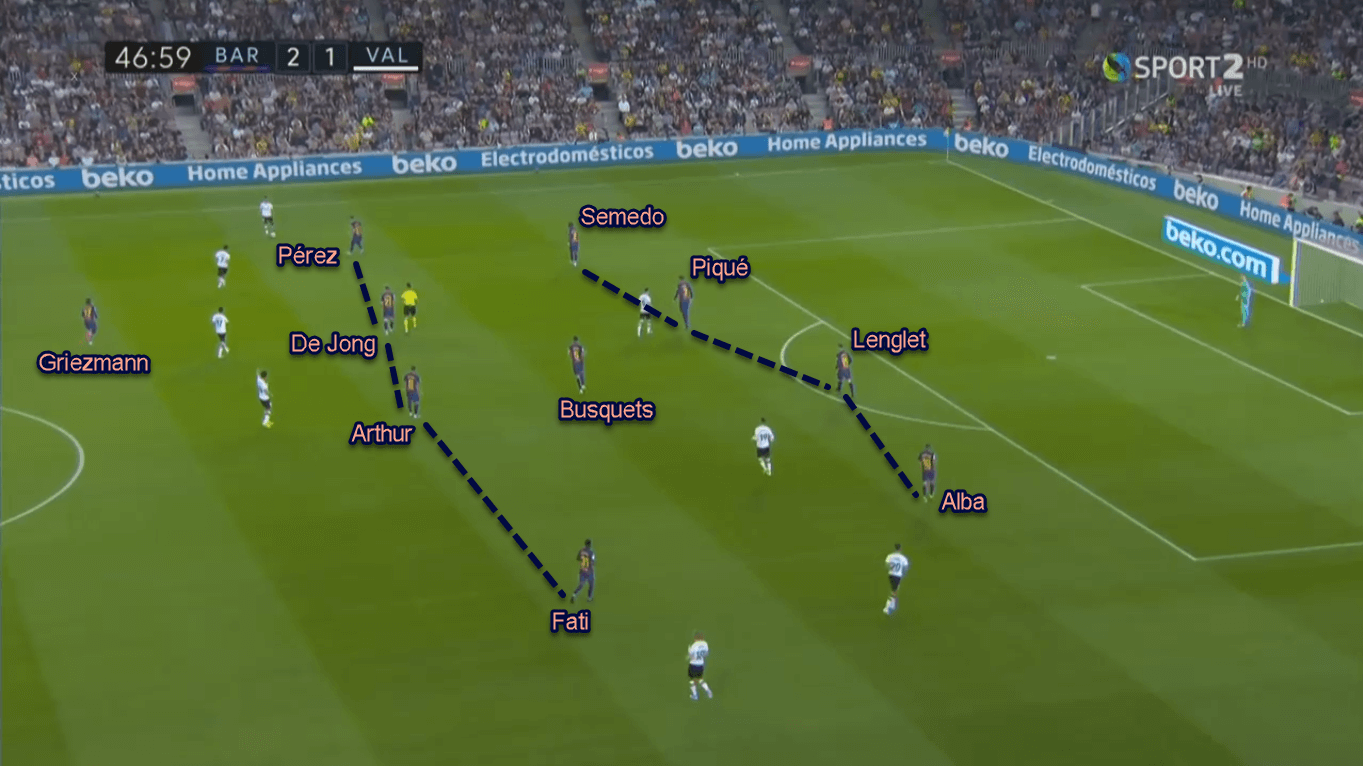
Different from him, Setién prefers a more central presence with at least two midfielders defending centrally. He would most likely set his team up in a medium-high 4–4–2 or a 4–2–3–1 press whenever Barça don’t have the ball.
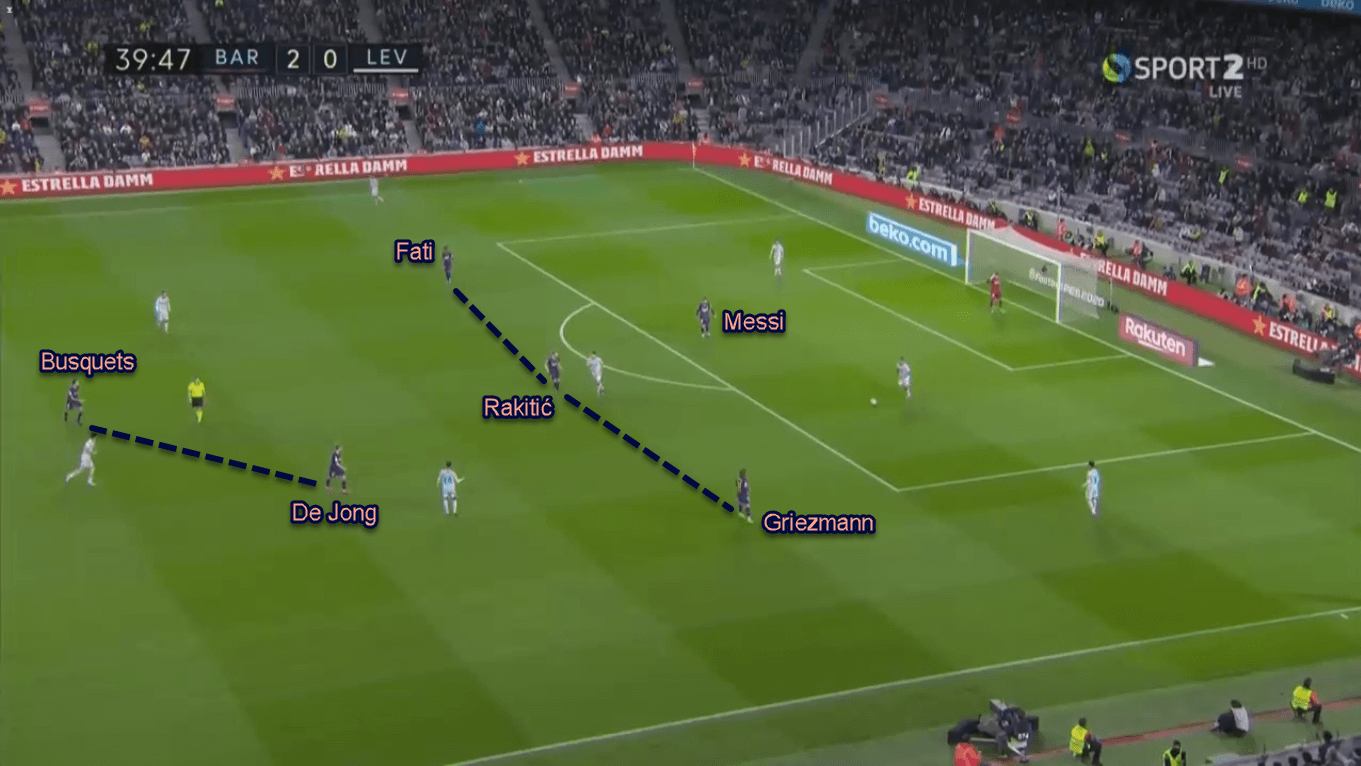
When the ball is in the central position, Fati would stay with his teammates to defend zonally. In front of him, the centre-forward would try to disrupt the build-up and to steer the ball wide. If the ball goes to his side, Fati would step out from his position and close down the opponent’s right-back. Furthermore, if the right-back receives the ball, Fati would then aggressively press the defender to win the ball back.
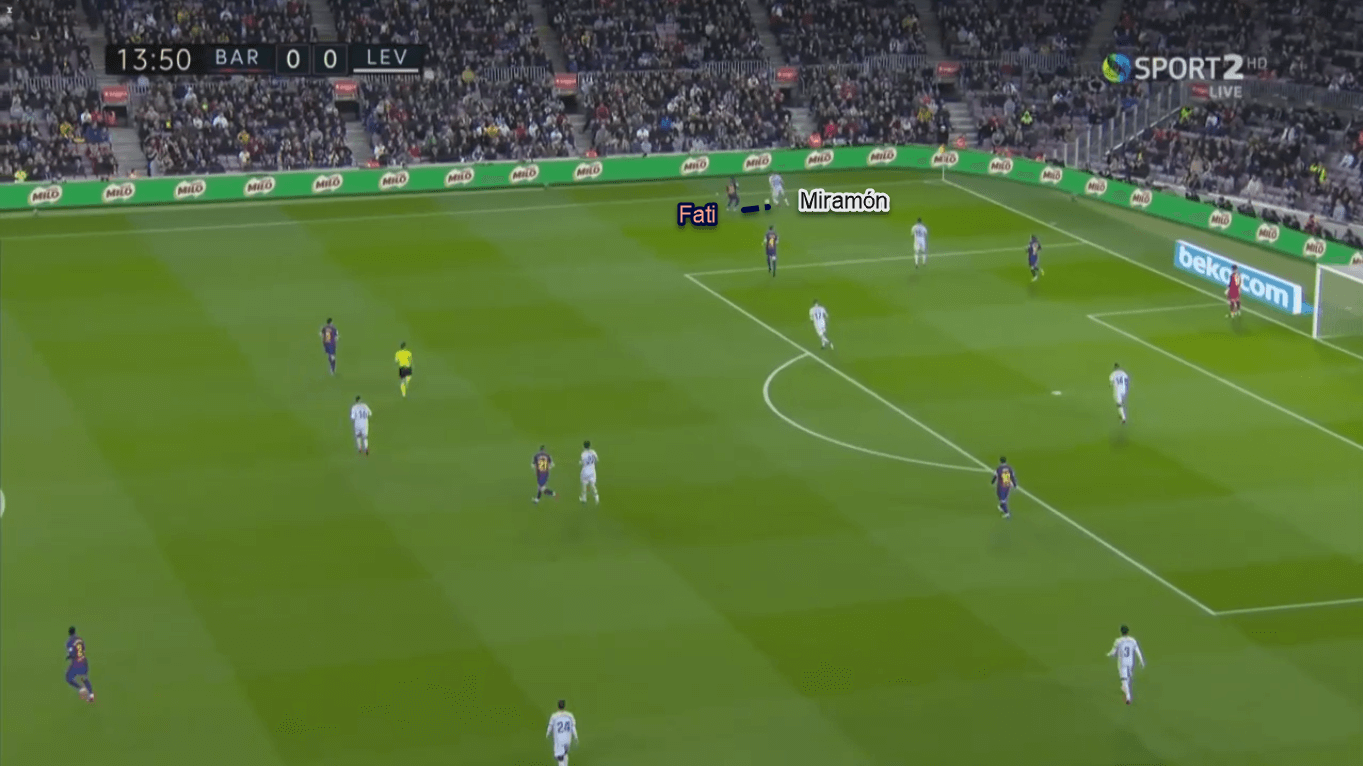
The difference appears when the ball goes to the opposite side. Fati would leave the right-back, come closer to his teammates and join the far-side press. In the process, Barça’s players try to prevent the on-ball opponent to access his nearby teammates. For Fati, it means he can come nearby to close the opponent’s central midfielder or centre-back, whichever is closest to him and hasn’t been occupied by his teammate.
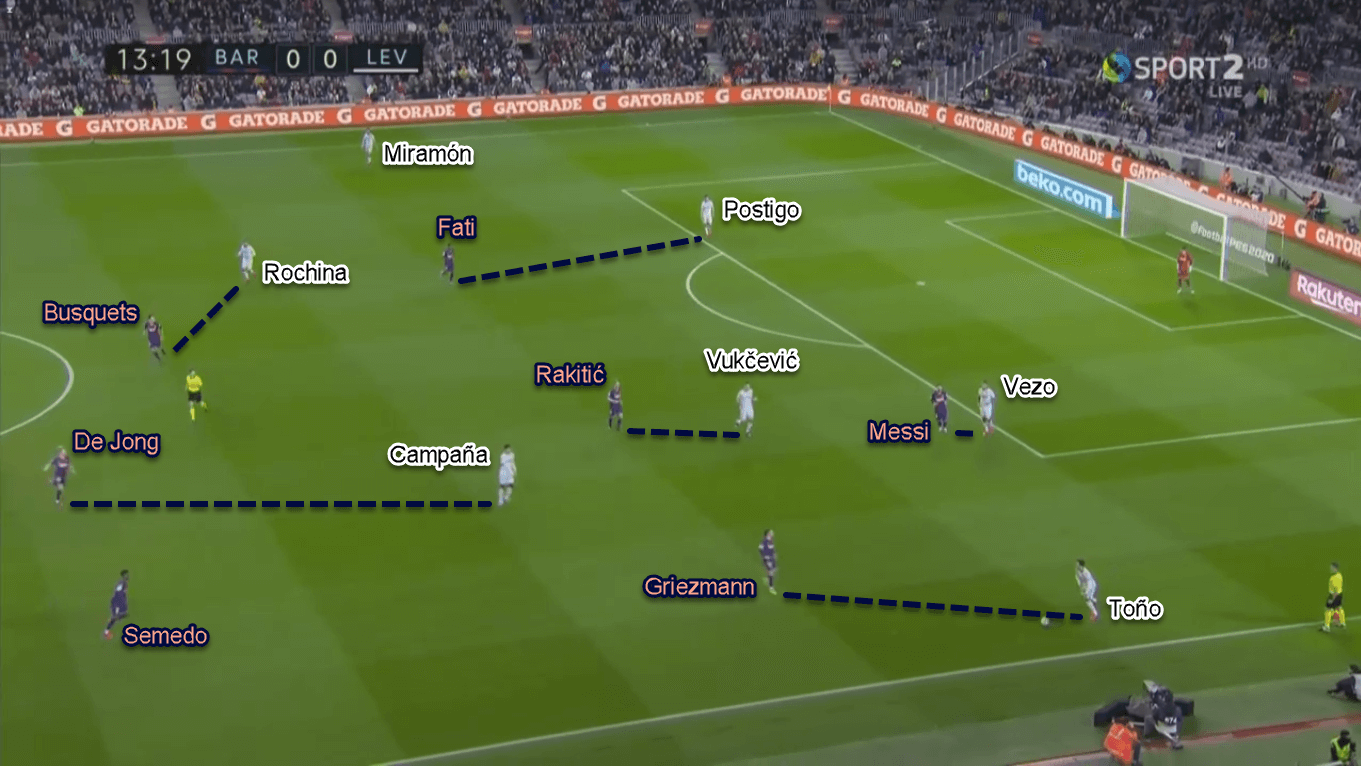
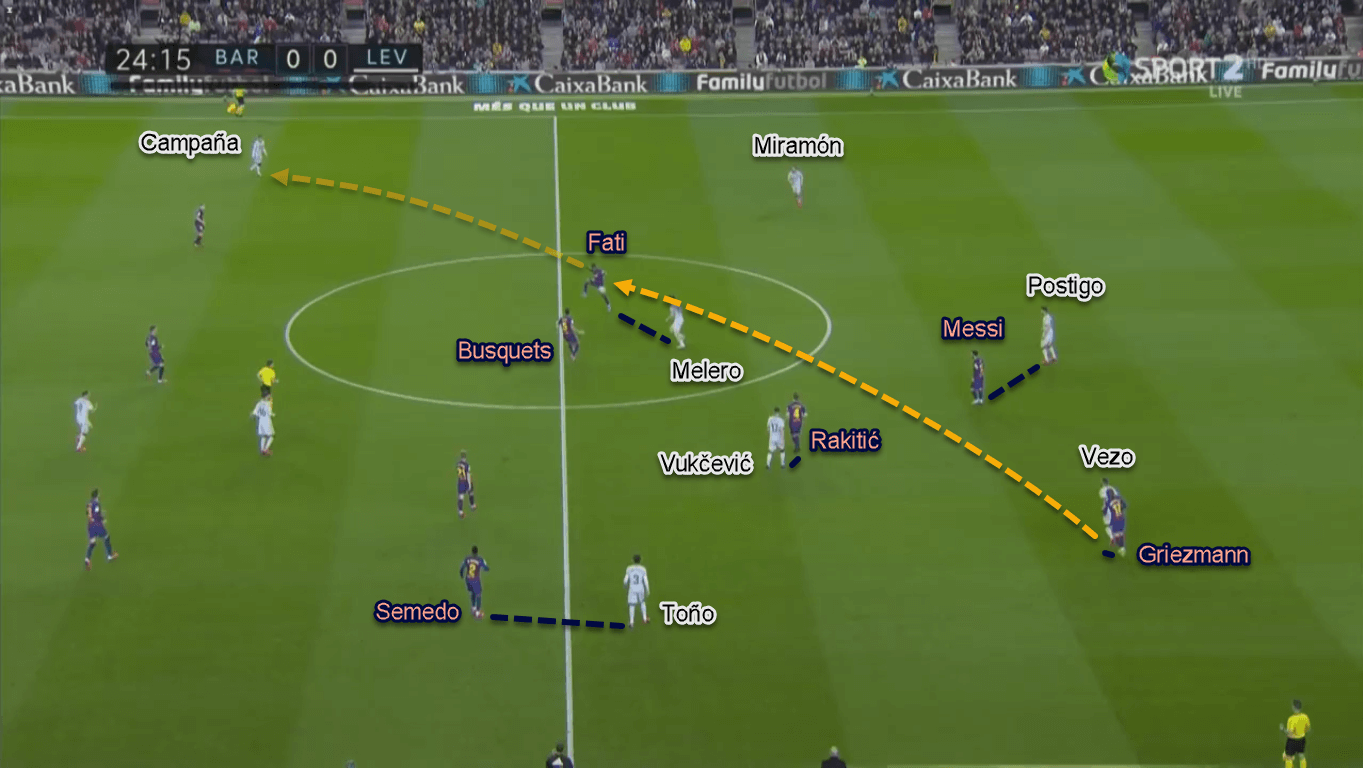
Potential issues
Despite his wide-reaching skillset and unpredictability in the final third, Fati has one big problem in his game. That being his heavy touch, especially with his weaker foot. Sometimes this particular weakness would make him lose the ball without any pressure whatsoever. Even worse, it could allow the opponents to initiate a counterattack against Barça.
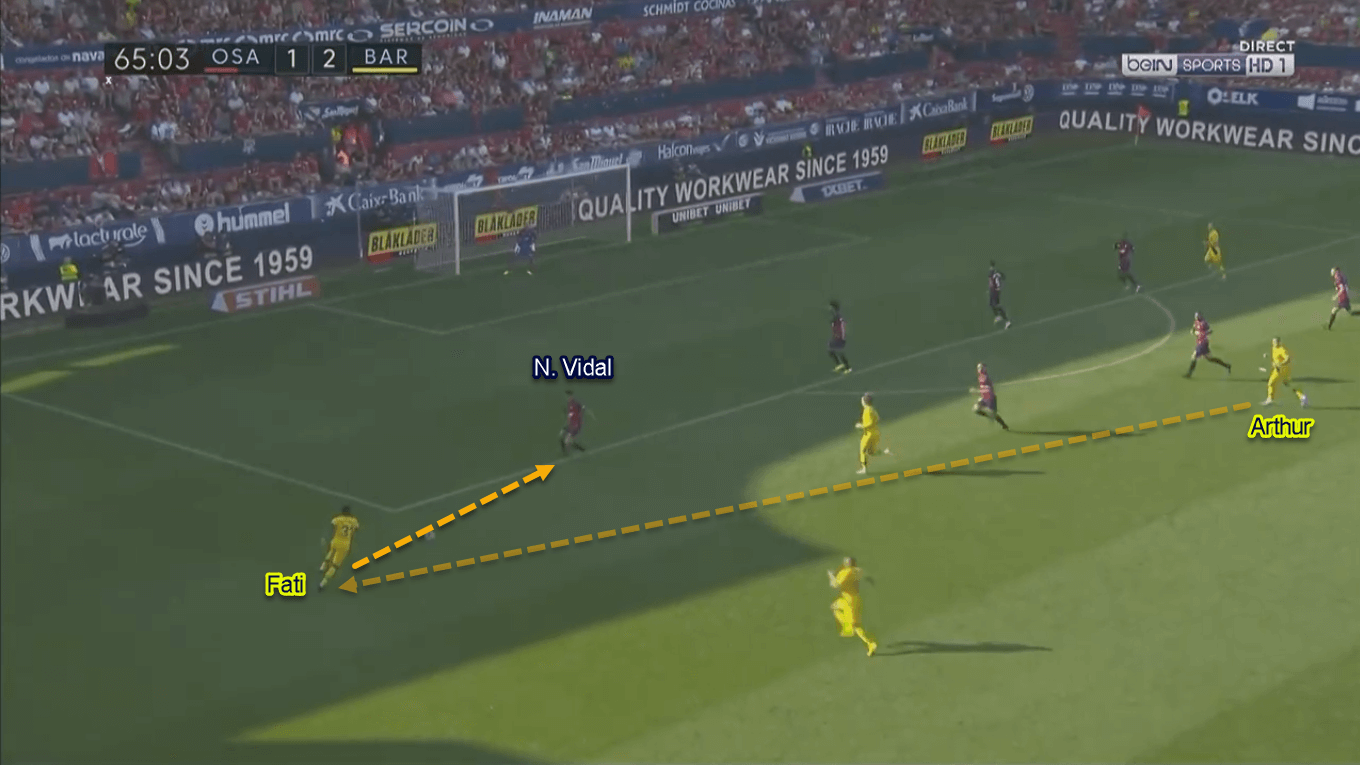
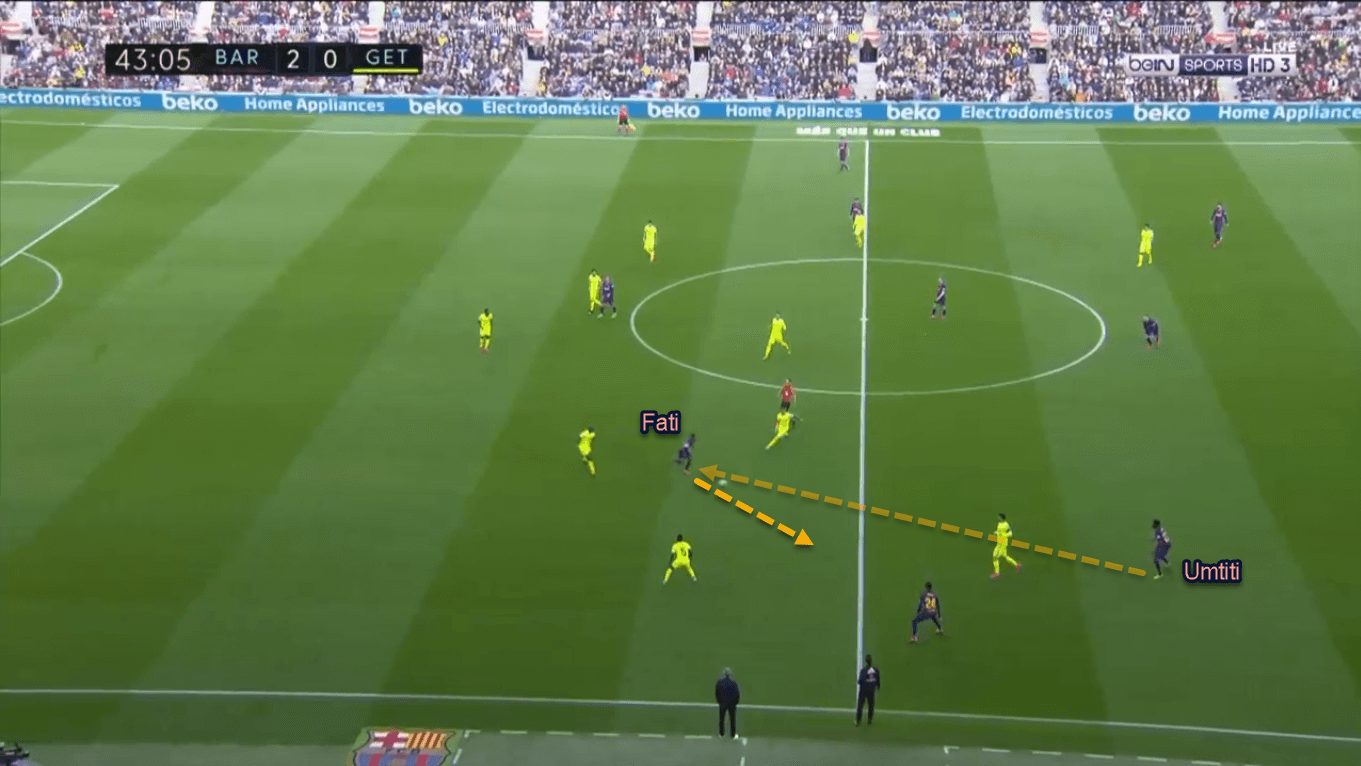
Fati’s weak foot also keeps him from excelling in one-versus-one duels. Indeed his dribbling ability is not bad, but sometimes he will allow his marker to contain him rather easily due to his one-footedness. In other occasions, Fati will hold the ball for too long instead of dribbling his way in quickly or squaring the ball to his nearby teammate. Both would provoke the same result: multiple opponents closing him down and steal the ball from him.
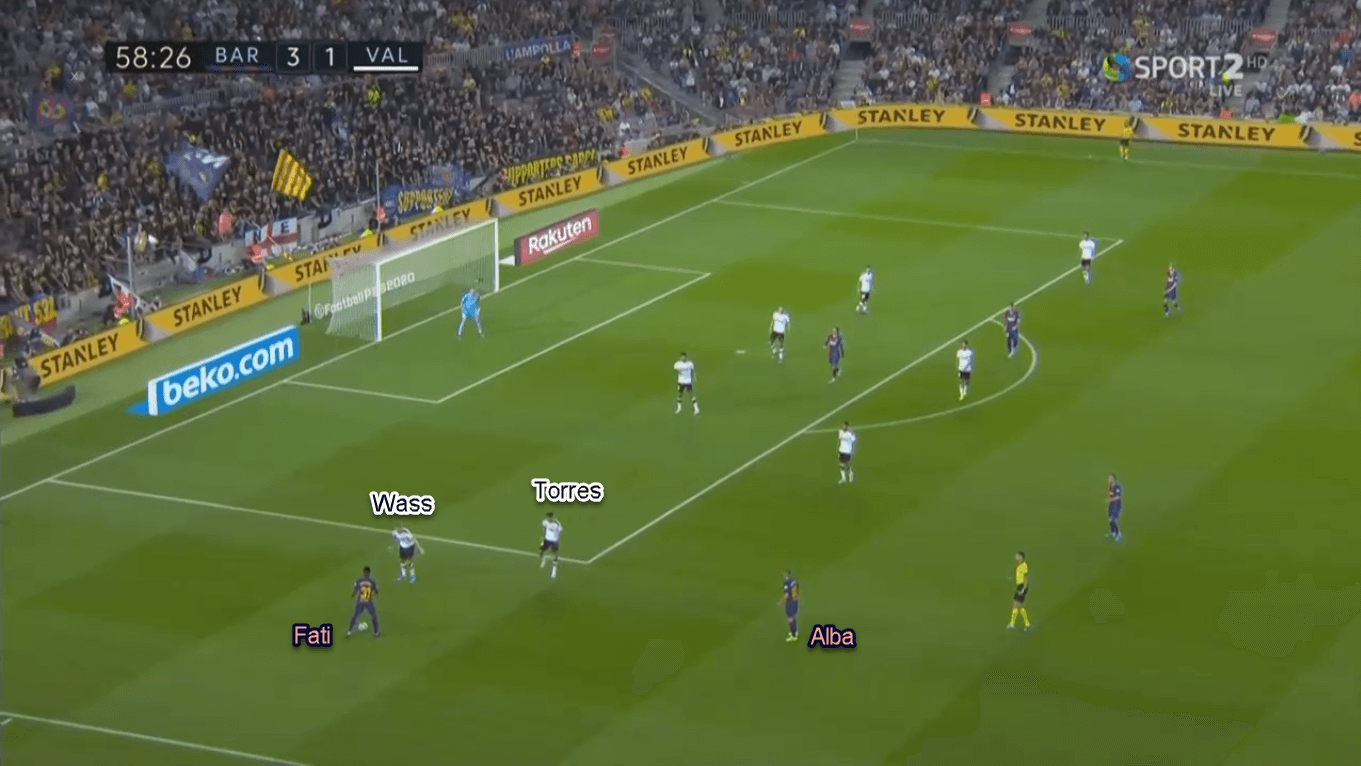
Conclusion
Fati is a very exciting young player. He has a great speed which can be unleashed anytime by Barça’s great passers, especially with Messi’s signature diagonal ball. At a very tender age, he already made a fuss among Barcelona fans all over the world with the unpredictability he brings in the final third.
Indeed he has weaknesses, those being his heavy touch and one-footedness in his dribbles. Yet, those can be polished under good mentorship and hours of training. Fati has pulled the spotlight towards him with the impact he has made thus far, but does he have what it takes to fulfil his potential? Only time will tell.

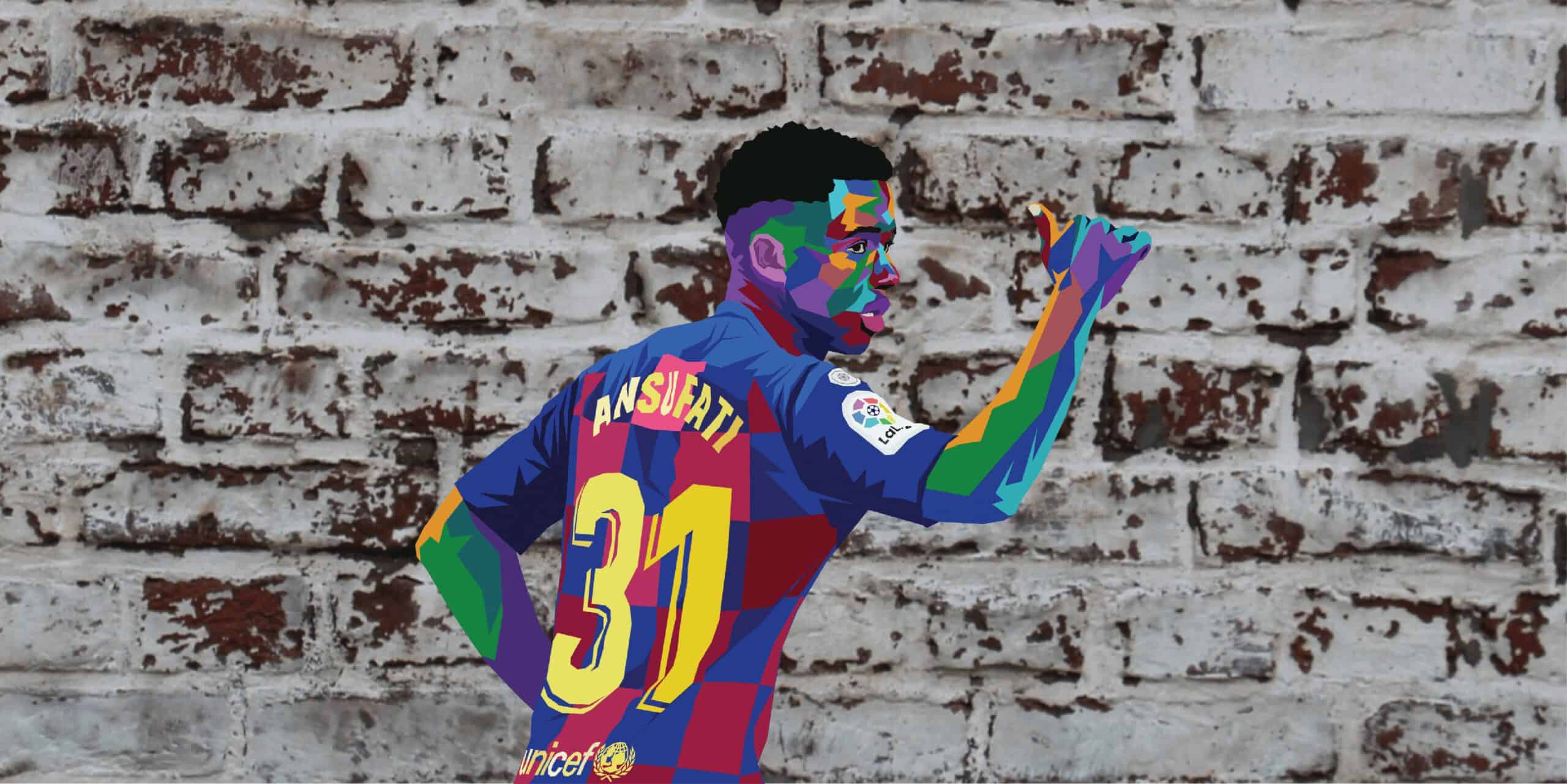



Comments